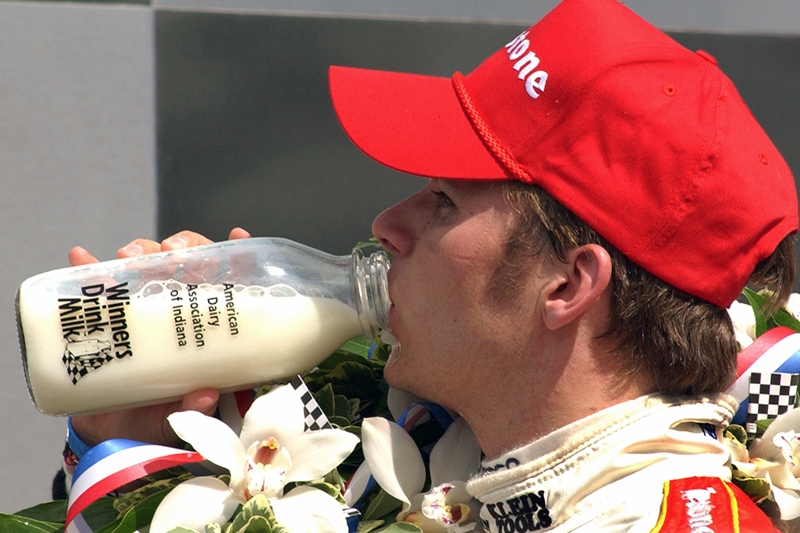You are viewing 1 of your 1 free articles. For unlimited access take a risk-free trial
Which whey to go? Choosing the right protein
 The importance of post-exercise recovery cannot be overstated. If you can recover faster, you can train harder again sooner. And over time, this means getting bigger fitness gains, and with less chance of illness or injury. In recent years, sports nutritionists have come to understand that as well as carbohydrate and fluid, post-exercise protein is critical for rapid recovery. But when it comes to postexercise protein choice, not all proteins are created equal. It turns out that because it can be rapidly digested and assimilated, and because it’s rich in a muscle building amino acid called leucine, whey protein is king for recovery. But the choice doesn’t end there. Go into any sports shop and you’ll see many different types of whey on sale such as whey isolate, whey concentrate, micro-filtered whey, hydrolysed whey etc, which begs the question what kind of whey is best for recovery?
The importance of post-exercise recovery cannot be overstated. If you can recover faster, you can train harder again sooner. And over time, this means getting bigger fitness gains, and with less chance of illness or injury. In recent years, sports nutritionists have come to understand that as well as carbohydrate and fluid, post-exercise protein is critical for rapid recovery. But when it comes to postexercise protein choice, not all proteins are created equal. It turns out that because it can be rapidly digested and assimilated, and because it’s rich in a muscle building amino acid called leucine, whey protein is king for recovery. But the choice doesn’t end there. Go into any sports shop and you’ll see many different types of whey on sale such as whey isolate, whey concentrate, micro-filtered whey, hydrolysed whey etc, which begs the question what kind of whey is best for recovery?The research
To try and answer this question, researchers have studied the effects of different types of whey protein on body composition and strength performance. In particular, they have looked to see if hydrolysed whey (whey protein that has been broken down into smaller building blocks to make digestion faster/easier) is more effective at promoting recovery and growth than other types.In one study, 56 six trained men were split into four different groups [Am Coll Nutr. 2017 Jan;36(1):16-27]. All of the subjects underwent an 8-week strength training programme, performing two upper and two lower-body sessions per week. However, each group was supplemented post-training and between meals with one of four different treatments:
- Two 30g servings of carbohydrate (the placebo group)
- Two 30g servings of 80% whey protein concentrate
- Two 30g servings of high-lactoferrin-containing whey protein concentrate
- Two 30g servings of extensively hydrolysed whey protein concentrate
The findings
Unsurprisingly, all of the subjects gained muscle mass following the strength-training programme. However, the type of whey consumed didn’t seem to make a difference to the amount of muscle mass gained. Similarly, pre and post-exercise strength testing results showed that regardless of what the subjects supplemented, there were no significant differences in either lower or upper-body strength gains. What was remarkable however were the differences in the body composition results. Subjects who took the hydrolysed whey reduced their body fat mass by around 6%. In contrast, those who took the carbohydrate supplement INCREASED their body fat mass by 4%. Summarising their findings, the authors commented that while the hydrolysed whey didn’t appear to offer any performance advantage over the other forms of whey, it did seem to augment fat loss – although they were at a loss to explain how this might have occurred.PP VERDICT
Although its primary role is to help muscles grow and repair after exercise, it seems that certain types of whey might also help lower body fat and improve body composition, which could be useful for athletes trying to improve their power-to-weight ratio. Although this might sound farfetched, some previous studies have indicated that whey protein supplementation as part of a training programme may help to lower body fat(1). Indeed, there’s also evidence that increasing dairy (milk, yoghurt, cheese – all rich in whey) intake in the diet can help with weight loss(2). The downside of hydrolysed whey is that it a) it tends to be dearer than other types of whey and b) it has a less pleasant taste than normal whey. But if lowering body fat/ optimising body composition is important to you (eg in the run up to a competition), you might decide it’s worth it!PRACTICAL SUGGESTIONS
- To accelerate recovery, use a whey-based protein recovery drink immediately after training, especially after harder/longer sessions.
- Endurance athletes should look for a recovery product that provides around 20g of protein along with around 60g of carbohydrate (to replenish muscle glycogen) per serving.
- Consume a meal containing a blend of protein and carbohydrate within 90 minutes of your recovery drink. If this is not possible, consume another recovery drink as above.
- If you’re trying to ‘lean up’, consider choosing a hydrolysed whey protein, which may offer additional advantages over other whey types.
1) J Am Coll Nutr. 2014;33(2):163-75
2) Nutrients. 2016 Jul 1;8(7). pii: E394
Newsletter Sign Up
Testimonials
Dr. Alexandra Fandetti-Robin, Back & Body Chiropractic
Elspeth Cowell MSCh DpodM SRCh HCPC reg
William Hunter, Nuffield Health
Newsletter Sign Up
Coaches Testimonials
Dr. Alexandra Fandetti-Robin, Back & Body Chiropractic
Elspeth Cowell MSCh DpodM SRCh HCPC reg
William Hunter, Nuffield Health
Keep up with latest sports science research and apply it to maximize performance
Today you have the chance to join a group of athletes, and sports coaches/trainers who all have something special in common...
They use the latest research to improve performance for themselves and their clients - both athletes and sports teams - with help from global specialists in the fields of sports science, sports medicine and sports psychology.
They do this by reading Sports Performance Bulletin, an easy-to-digest but serious-minded journal dedicated to high performance sports. SPB offers a wealth of information and insight into the latest research, in an easily-accessible and understood format, along with a wealth of practical recommendations.
*includes 3 coaching manuals
Get Inspired
All the latest techniques and approaches
Sports Performance Bulletin helps dedicated endurance athletes improve their performance. Sense-checking the latest sports science research, and sourcing evidence and case studies to support findings, Sports Performance Bulletin turns proven insights into easily digestible practical advice. Supporting athletes, coaches and professionals who wish to ensure their guidance and programmes are kept right up to date and based on credible science.











